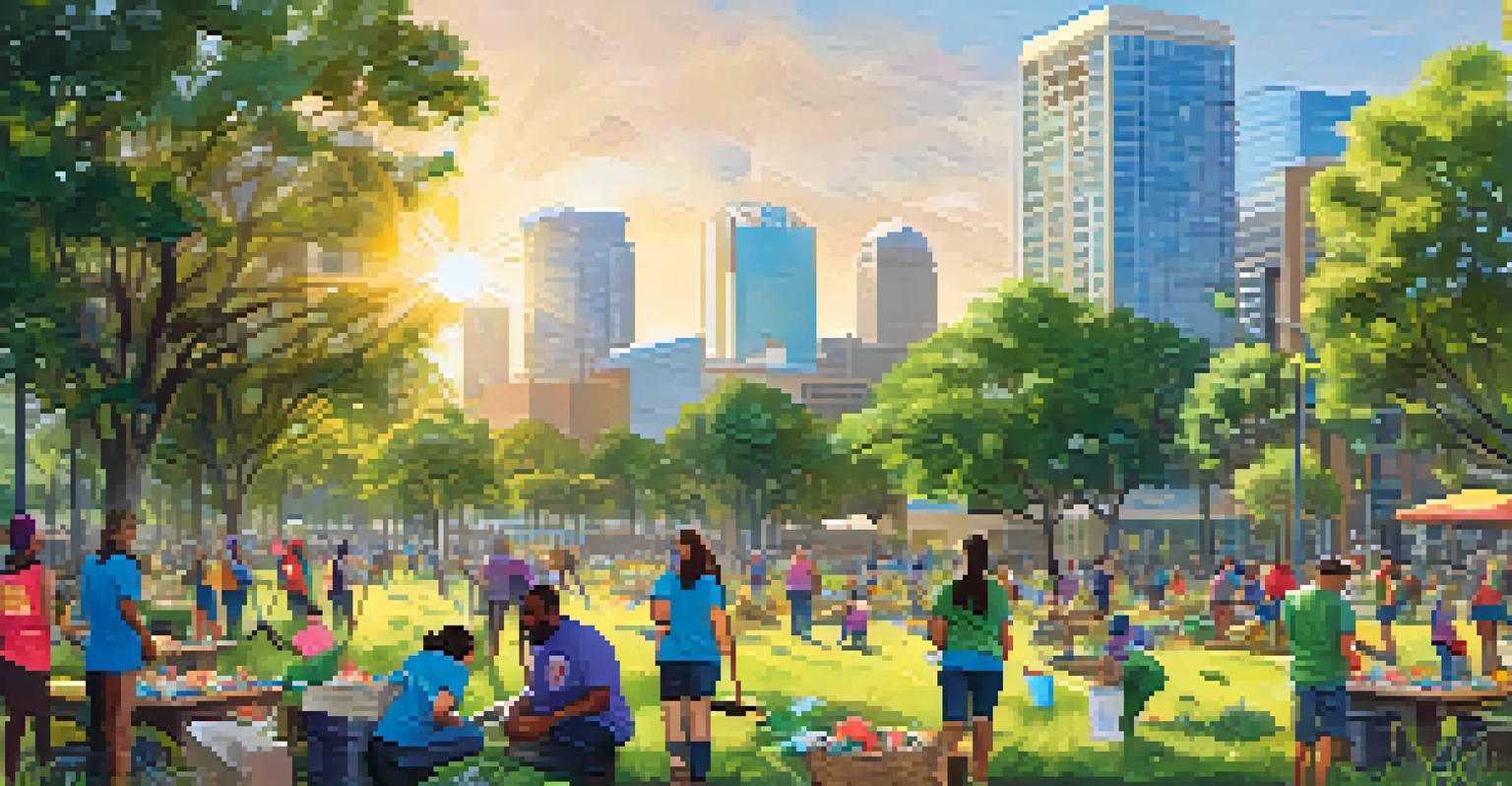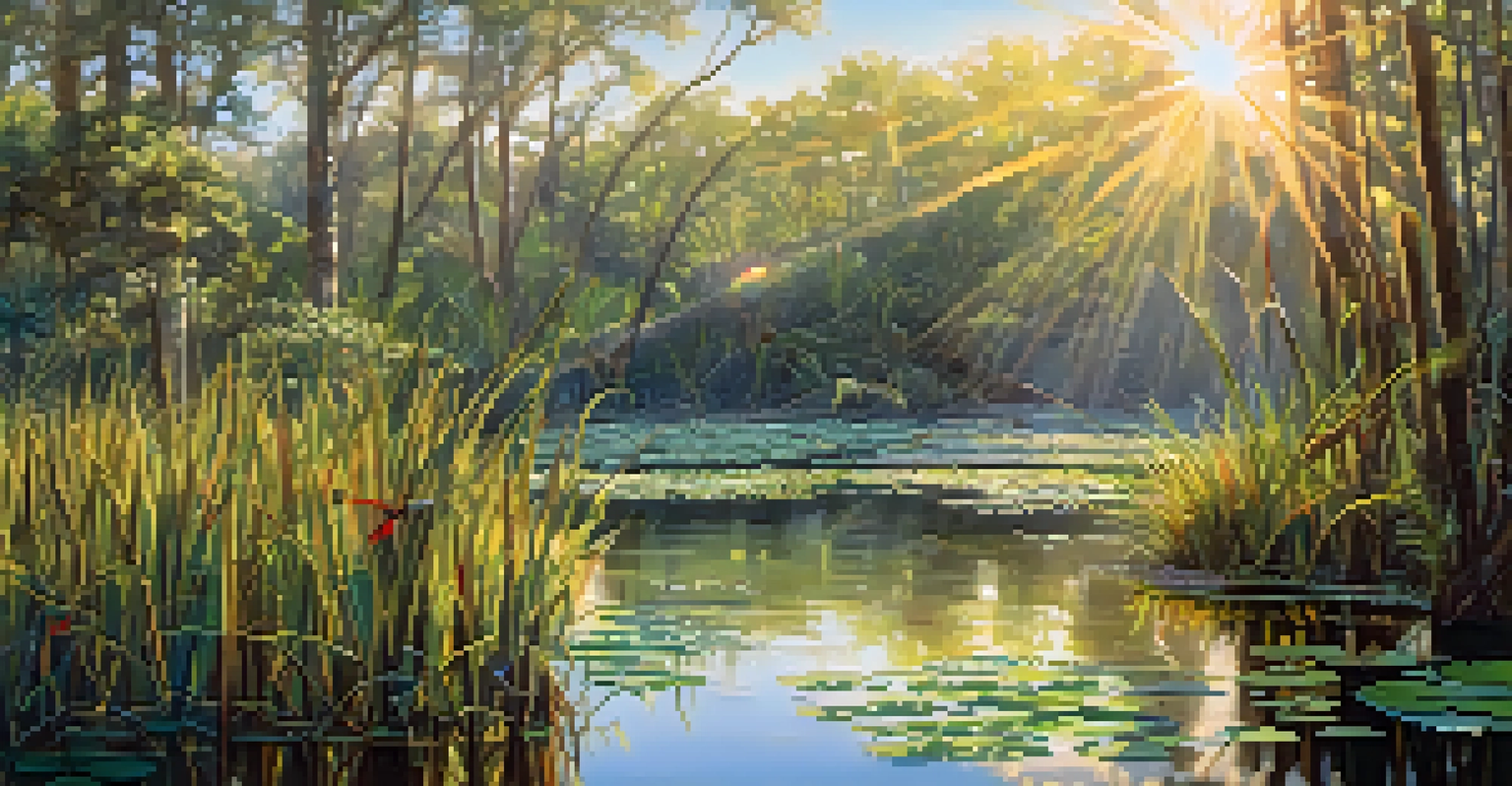Conservation Challenges: Protecting Tampa's Wildlife

The Importance of Wildlife Conservation in Tampa
Wildlife conservation plays a vital role in maintaining the ecological balance in Tampa. This region boasts a rich diversity of flora and fauna that contribute to the overall health of the environment. Protecting wildlife ensures that we preserve not only the species themselves but also the habitats they occupy, which are crucial for ecosystem stability.
The future will be shaped by our decisions today, not tomorrow.
Tampa's unique biodiversity, including species like the West Indian Manatee and the Florida Scrub-Jay, highlights the need for targeted conservation efforts. These species are not just local treasures; they serve as indicators of environmental health. If they're thriving, it often means their habitats—and by extension, our own environment—are in good shape.
Moreover, wildlife conservation can enhance community well-being. Engaging in conservation initiatives often brings communities together, fostering a sense of stewardship and connection to the natural world. This connection can lead to increased support for policies that protect our precious ecosystems.
Habitat Loss: A Major Threat to Tampa's Wildlife
One of the most pressing challenges facing Tampa's wildlife is habitat loss, primarily due to urban development. As the city expands, natural habitats are often sacrificed for new roads, housing, and commercial spaces. This encroachment not only displaces wildlife but also fragments their living spaces, making it harder for them to thrive.

For instance, wetlands, which are crucial for many species, are being drained or altered for development projects. These wetlands serve as breeding grounds for fish and birds and act as natural water filters. Losing these areas means losing vital ecosystems that support a multitude of wildlife.
Wildlife Conservation is Essential
Protecting wildlife in Tampa is crucial for maintaining ecological balance and community well-being.
Addressing habitat loss requires a collaborative approach, involving city planners, conservationists, and the community. By integrating wildlife corridors and green spaces into urban planning, we can create a more sustainable environment that allows both people and wildlife to coexist harmoniously.
Climate Change and Its Impact on Tampa's Ecosystems
Climate change is another significant challenge that Tampa's wildlife faces. Rising temperatures and changing weather patterns can disrupt the delicate balance of local ecosystems. Species that are unable to adapt quickly enough may face serious threats, including extinction.
In every walk with nature one receives far more than he seeks.
For example, the increase in sea levels poses a risk to coastal habitats, which are home to many bird and fish species. These areas are essential for feeding, nesting, and breeding, and their loss would have a cascading effect on the food web. Additionally, altered rainfall patterns can lead to droughts or flooding, further stressing wildlife and their habitats.
To combat these effects, it’s crucial to implement climate resilience strategies. This might include restoring habitats, protecting coastal areas, and reducing greenhouse gas emissions. By taking proactive measures, we can help safeguard Tampa's wildlife against the impacts of climate change.
Pollution: A Silent Killer of Wildlife
Pollution is a silent yet deadly threat to Tampa's wildlife, affecting everything from water quality to air purity. Runoff from urban areas can carry harmful chemicals into rivers and bays, jeopardizing aquatic life. This contamination can lead to reduced fish populations and negatively impact species higher up the food chain.
Moreover, plastic pollution is another growing concern, with items like microplastics increasingly found in marine environments. Birds and sea turtles often mistake plastic for food, leading to injury or death. The presence of these pollutants not only harms wildlife but also affects human health through contaminated water and food sources.
Habitat Loss Threatens Biodiversity
Urban development is leading to habitat loss, which displaces wildlife and disrupts local ecosystems.
Addressing pollution requires community involvement and policy changes. Initiatives like beach clean-ups, stricter regulations on industrial waste, and increased public awareness can help mitigate the impact of pollution. Together, we can create a cleaner, safer environment for both wildlife and ourselves.
Invasive Species: A Growing Threat to Native Wildlife
Invasive species are one of the most significant threats to Florida's native wildlife, including those in Tampa. These non-native plants and animals often outcompete local species for resources, leading to declines in native populations. For example, the Burmese python has become notorious for disrupting local ecosystems by preying on native wildlife.
The introduction of invasive species can lead to a loss of biodiversity, which is crucial for a balanced ecosystem. As native species diminish, the effects ripple through the food chain, impacting everything from plants to predators. This imbalance can significantly alter the natural landscape and its functionality.
To combat this issue, efforts must be made to manage and control invasive species effectively. Public education initiatives can help raise awareness about the risks of introducing non-native species, while local organizations can focus on removal and restoration projects. By protecting our native wildlife, we preserve the integrity of Tampa's ecosystems.
Community Involvement in Wildlife Conservation Efforts
Community engagement is essential for successful wildlife conservation in Tampa. Local residents can play a vital role in protecting wildlife through various initiatives, including volunteering for conservation projects and participating in community education programs. This involvement helps foster a culture of stewardship towards the environment.
For instance, organizations often host events like clean-up drives, habitat restoration days, and wildlife monitoring programs. These activities not only benefit local ecosystems but also strengthen community ties. When people come together for a common cause, it creates a sense of belonging and responsibility toward their natural surroundings.
Community Involvement is Key
Engaging local residents in conservation initiatives fosters a culture of stewardship and strengthens community ties.
Moreover, educating the community about the importance of wildlife conservation can lead to lasting change. Schools, non-profits, and local governments can collaborate to provide resources and information, empowering residents to make informed decisions that support wildlife. Together, we can create a community that values and protects its rich biodiversity.
The Role of Policy in Protecting Tampa's Wildlife
Effective policy is crucial for the protection of Tampa's wildlife and habitats. Local governments play a key role in establishing regulations that safeguard natural areas and enforce conservation measures. Policies that prioritize environmental protection can help mitigate some of the pressing challenges facing wildlife today.
For example, zoning laws can be implemented to protect critical habitats from development, while conservation easements can preserve land for future generations. Furthermore, policies addressing climate change, pollution control, and invasive species management are vital for a comprehensive conservation strategy.

Advocating for stronger wildlife protection policies requires public support and awareness. Citizens can engage with local representatives to express their concerns and push for sustainable practices. By fostering a culture of advocacy, we can ensure that wildlife conservation remains a priority for Tampa's future.